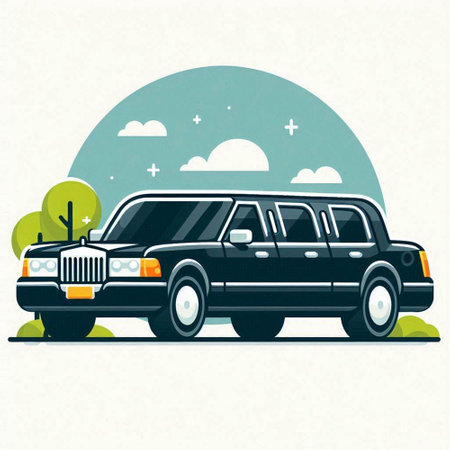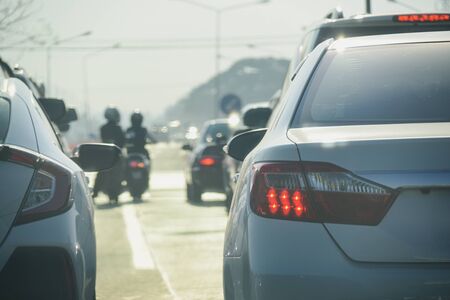1. Introduction: The Symbiotic Relationship Between Hollywood and Motorsport
Few partnerships are as distinctly American as the one between Hollywood and motorsport. Over the decades, the glitz and glamour of cinema have seamlessly merged with the adrenaline-fueled world of auto racing, creating a unique cultural phenomenon that has captivated audiences nationwide. The silver screen has not only immortalized legendary races and drivers but has also helped to popularize and shape motorsport events across the United States. In turn, these high-octane spectacles have inspired countless filmmakers, screenwriters, and pop culture icons to weave racing into the fabric of American storytelling. This dynamic relationship goes beyond mere entertainment; it reflects broader themes of innovation, ambition, and the relentless pursuit of victory—qualities that resonate deeply within both industries. By exploring this mutual influence and historical connection, we can better understand how Hollywood’s portrayal of speed, competition, and heroism has elevated motorsport events to iconic status in American culture.
Motorsport in Hollywood: Iconic Films and TV Shows
Hollywood has played a pivotal role in shaping the American public’s fascination with motorsports. By weaving high-speed races, larger-than-life characters, and dramatic storylines into its films and television series, the entertainment industry has both reflected and fueled the country’s passion for racing. From classic cinema to binge-worthy TV shows, these productions have introduced millions of viewers to the thrill and culture of motorsport, often leaving a lasting mark on how racing is perceived across the nation.
Perhaps the most influential motorsport film is “Days of Thunder” (1990), starring Tom Cruise as a hotshot NASCAR driver. The movie not only brought NASCAR into mainstream pop culture but also showcased the intensity and camaraderie of stock car racing. Similarly, “Talladega Nights: The Ballad of Ricky Bobby” (2006) used comedy to satirize yet celebrate Southern racing culture, creating iconic catchphrases and introducing NASCAR lingo to a broader audience. These films contributed to an uptick in race attendance and merchandise sales, proving their real-world impact.
Television has also been instrumental in popularizing motorsports. Series like “Speed Racer” captured young audiences with its animated adventures, while reality shows such as “Fast N’ Loud” and “Street Outlaws” showcased the diversity of America’s car scene, from custom builds to underground drag racing. These programs have demystified racing subcultures and brought them closer to everyday viewers, inspiring many to get involved in local events or follow professional leagues.
Film/TV Show |
Year Released |
Motorsport Focus |
Cultural Impact |
|---|---|---|---|
| Days of Thunder | 1990 | NASCAR Stock Car Racing | Mainstreamed NASCAR; boosted race attendance |
| Talladega Nights | 2006 | NASCAR Satire/Comedy | Brought racing humor into pop culture; iconic catchphrases |
| The Fast and the Furious Franchise | 2001–present | Street Racing/Car Culture | Influenced street racing trends; globalized American car culture |
| Speed Racer (TV) | 1967–1968 (U.S.) | Animated Racing Adventure | Sparked youth interest in racing; inspired future media adaptations |
| Street Outlaws (TV) | 2013–present | Underground Drag Racing | Brought street racing subculture into mainstream awareness |
The portrayal of motorsports in Hollywood extends beyond mere entertainment; it shapes perceptions, inspires new fans, and even influences how events are marketed and attended. By dramatizing rivalries, highlighting technological advancements, and celebrating the personalities behind the wheel, movies and TV shows have ensured that motorsport remains an indelible part of American pop culture.

3. Celebrity Influence and the Glamorization of Motorsport Events
One of the most significant ways Hollywood and pop culture have shaped American motorsport is through the influence of celebrities—both racers and entertainment icons—who bring widespread attention to racing events. When famous actors, musicians, or athletes attend or participate in motorsport races, their star power attracts a broader audience beyond traditional racing fans. The presence of celebrities at iconic events like the Daytona 500 or the Indianapolis 500 has helped transform these races into major cultural happenings that go far beyond the sport itself.
Hollywood stars often serve as grand marshals, wave the green flag, or perform the national anthem, generating buzz on social media and in entertainment news outlets. These appearances not only increase ticket sales but also enhance TV viewership by making racing feel more glamorous and aspirational. Moreover, celebrity endorsements and partnerships with racing teams or automotive brands help bridge the gap between motorsport and mainstream pop culture. For example, well-known figures like Paul Newman and Patrick Dempsey have competed professionally, drawing their fan bases into the world of racing and inspiring new generations to take an interest in motorsports.
This blending of celebrity culture with motorsport has led to an increased emphasis on style, luxury, and exclusivity at major events. VIP parties, red carpet entrances, and branded experiences are now common features at American races. As a result, attending a motorsport event is not just about watching cars speed by—it’s about participating in a high-profile social occasion where fans can rub shoulders with celebrities and influencers. This glamorization has played a pivotal role in keeping motorsport relevant in a competitive entertainment landscape dominated by movies, music festivals, and digital media.
4. Pop Culture’s Impact on Event Presentation and Fan Experience
Pop culture trends have dramatically transformed the presentation and overall fan experience at American motorsport events. The integration of music, fashion, and especially social media has brought a new level of excitement, interactivity, and accessibility to races like NASCAR, IndyCar, and Formula 1 in the United States.
Music: Setting the Tone and Energizing Crowds
Motorsport events now regularly feature high-profile live musical performances, from pre-race concerts to national anthem renditions by pop stars. These collaborations with artists not only elevate the atmosphere but also attract younger fans who might otherwise overlook motorsports. The cross-promotion between music acts and racing teams is often seen in official playlists, driver introductions, and halftime entertainment, making race days feel more like music festivals than traditional sporting events.
Fashion: Creating an Iconic Look
The influence of pop culture on fashion is evident in everything from driver uniforms to team merchandise. Collaborations with streetwear brands or celebrity designers have made racing gear trendy both at the track and in everyday life. Fans proudly wear branded apparel—sometimes co-created with influencers or musicians—which helps spread awareness and builds a sense of community among attendees. The table below highlights how pop culture trends intersect with motorsport fashion:
| Pop Culture Trend | Motorsport Fashion Example |
|---|---|
| Streetwear Influence | NASCAR x Supreme limited-edition jackets |
| Celebrity Endorsements | Lewis Hamiltons Tommy Hilfiger collection |
| Retro Revivals | Throwback driver suits celebrating past eras |
Social Media: Connecting Fans and Drivers
Social media platforms have revolutionized how fans interact with motorsport events. Teams, drivers, and event organizers use Instagram, TikTok, Twitter (X), and YouTube to share behind-the-scenes content, host live Q&As, and launch viral challenges that encourage fan participation. Hashtags unite online communities during race weekends, while exclusive digital content enhances both remote and onsite engagement.
Fan Engagement through Digital Initiatives
- Live streaming pit walks or garage tours via Instagram Live or YouTube
- Interactive polls determining grid walk questions or best-dressed fans
- TikTok dance challenges featuring drivers or mascots
Branding: A New Era of Motorsport Identity
The influence of pop culture is also reflected in event branding—from logo design to promotional campaigns that incorporate trending colors, memes, or catchphrases. This keeps motorsports culturally relevant and relatable to a broad audience, bridging generational gaps and ensuring long-term fan loyalty.
5. Sponsorships, Cross-Promotions, and Commercial Synergy
Hollywood and pop culture have dramatically reshaped the business landscape of American motorsport events through strategic sponsorships, cross-promotions, and commercial collaborations. Major film studios and music labels frequently partner with racing organizations like NASCAR and IndyCar to create dynamic campaigns that blur the lines between entertainment and sport. For example, blockbuster movies often become official sponsors of races, with cars wrapped in promotional liveries featuring iconic characters or film logos. This synergy extends beyond visual branding—movie stars might make appearances at the track, or exclusive behind-the-scenes film content gets screened for fans during race weekends, creating an immersive experience that draws in a broader audience.
These collaborations aren’t limited to movies alone; music labels leverage motorsport events as platforms for album launches or live performances, integrating concerts into race day schedules. Popular musicians are booked to perform national anthems or headline post-race celebrations, turning a traditional sporting event into a multifaceted entertainment spectacle. These cross-promotional strategies have helped motorsport events tap into fan bases outside the typical racing demographic, increasing ticket sales, TV viewership, and online engagement.
The commercial impact is significant—brands associated with Hollywood and pop culture bring substantial marketing budgets and creative resources to the table. Joint advertising campaigns appear on television, streaming services, and social media, amplifying both the racing event and the entertainment property being promoted. Merchandise sales also benefit from these partnerships, with limited-edition collectibles and apparel driving additional revenue streams. Ultimately, this blend of motorsports and popular culture has transformed races from standalone competitions into full-scale cultural events, ensuring their continued commercial success and relevance in American society.
6. Case Studies: Daytona 500, Indy 500, and NASCAR’s Hollywood Connections
American motorsport events have long recognized the value of partnering with Hollywood and pop culture icons to broaden their appeal. The Daytona 500, often called “The Great American Race,” is a prime example. Each year, the event features celebrity grand marshals, high-profile musical performances, and star-studded pre-race ceremonies. Over the years, A-list actors like Matthew McConaughey and musicians such as Luke Bryan have been invited to participate, creating a unique blend of racing excitement and pop culture spectacle that resonates with fans nationwide.
The Indianapolis 500 has also leveraged Hollywood’s star power to enhance its national profile. Movie stars frequently wave the green flag or deliver the iconic command, “Drivers, start your engines!” In recent years, celebrities like Chris Hemsworth and David Letterman have brought additional attention to the race by engaging with fans both at the track and on social media platforms. These partnerships not only generate buzz but also introduce motorsports to audiences who might not otherwise tune in.
NASCAR’s ongoing relationship with Hollywood is perhaps best showcased through its integration into film and television. Movies like “Days of Thunder” and Pixar’s “Cars” have featured NASCAR themes and branding, helping cement stock car racing as part of mainstream American entertainment. NASCAR has actively collaborated with these productions, providing access to real drivers and tracks for added authenticity. Furthermore, NASCAR races frequently include promotional tie-ins with major movie releases—ranging from themed paint schemes on cars to exclusive appearances by film stars at race weekends—further blending the worlds of motorsport and pop culture.
These case studies demonstrate that embracing Hollywood partnerships and pop culture integrations has become a strategic move for major American motorsport events. Not only do they attract new audiences, but they also ensure that these iconic races remain relevant in a rapidly evolving entertainment landscape.
7. Conclusion: Lasting Cultural and Social Impacts
The relationship between Hollywood, pop culture, and American motorsport events has proven to be both powerful and enduring. From the cinematic spectacle of racing movies to celebrity appearances at NASCAR and IndyCar races, this fusion has fundamentally shaped how motorsports are perceived and celebrated in the United States. Movies like “Days of Thunder” and franchises such as “Fast & Furious” have not only entertained millions but also introduced new fans to the excitement of auto racing, blending entertainment with high-octane athleticism. Pop culture’s influence extends beyond the big screen, touching everything from fashion trends in the stands to music choices at racetracks and even the way events are marketed to younger audiences. As technology evolves and social media amplifies these connections, the bond between Hollywood storytelling, popular culture, and motorsport continues to adapt—ensuring that racing remains relevant for future generations. Ultimately, this ongoing relationship reflects deeper themes of American identity: innovation, competition, and the pursuit of spectacle. The shared cultural memory created by iconic films, unforgettable race moments, and star-studded events has helped motorsport carve out a lasting place in American society. Looking ahead, this dynamic will keep evolving—guaranteeing that the influence of Hollywood and pop culture on American motorsport is far from reaching the finish line.

